

The next stop on my trip would take me to Iowa's western neighbor, the state of Nebraska. This is another agricultural state that doesn't attract much attention at the national level, with Nebraska also having no major cities or famous tourist attractions. Like Iowa, Nebraska is located geographically on the Great Plains and tends to be known mostly for growing a whole lot of corn. The teams at the University of Nebraska are even known as the "Cornhuskers" and no one seems to find that strange. Nebraska is essentially a larger, colder, and less populous version of Iowa. However, like everywhere else that I visited on this trip, it had its own unique attractions and plenty of interesting stops to make. I would be spending this particular day in the cities of Omaha and Lincoln, respectively the largest city in Nebraska and the state capital. Omaha in particular is deceptively large, with an urban population of just under 500,000 people which makes it roughly the 40th largest city in the United States. Between the urban amenities in Omaha and the state capital buildings in Lincoln, there was another full day ahead on my plate.
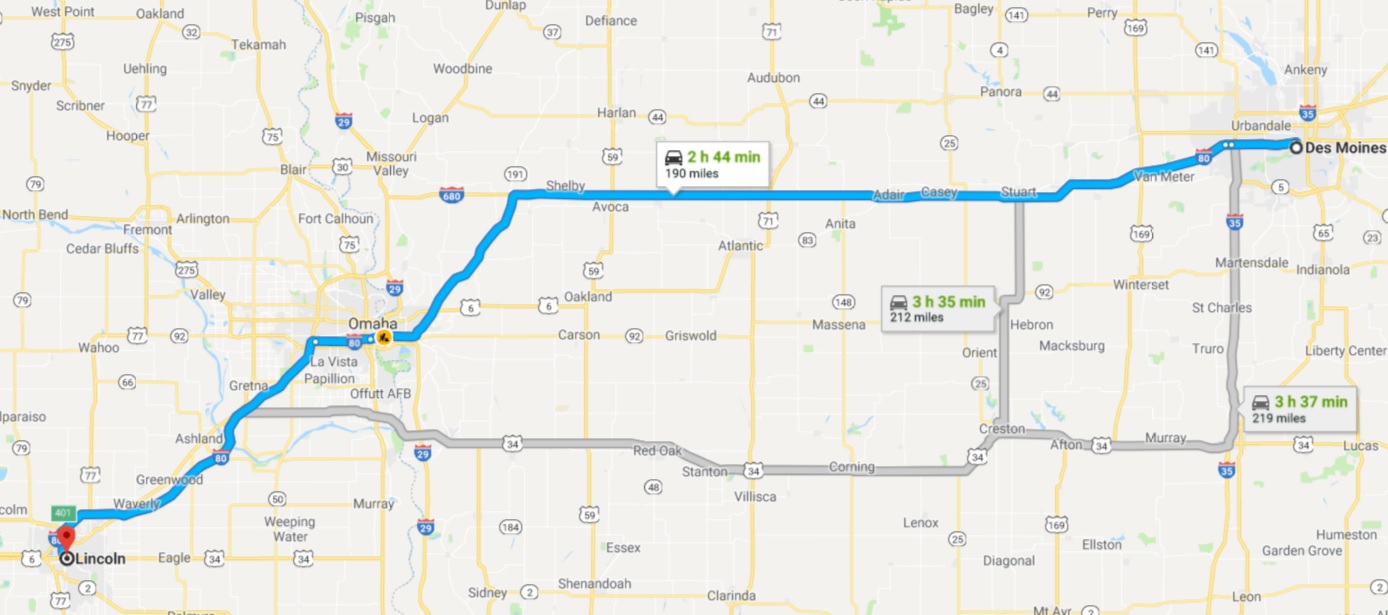
This was one of the shorter days that I had in terms of driving. It was less than 200 miles (about 300 kilometers) from Des Moines, Iowa to Lincoln, Nebraska and I would be able to stop at Omaha en route without going out of my way. The total driving time would be about two hours for the first leg of the journey and then roughly another hour from Omaha to Lincoln. I had planned to have a shorter travel day on this Wednesday to get a bit of a break, sandwiched in between the lengthy drive across Iowa the previous day and an even longer drive coming up the following day. The net result was that I was able to sleep in a bit on this day, waking up at 7:00 AM and still managing to reach Omaha a little after 9:00 AM. I suppose that it says something about this trip that waking up at 7:00 AM and driving "only" 200 miles were signs of a rest day.

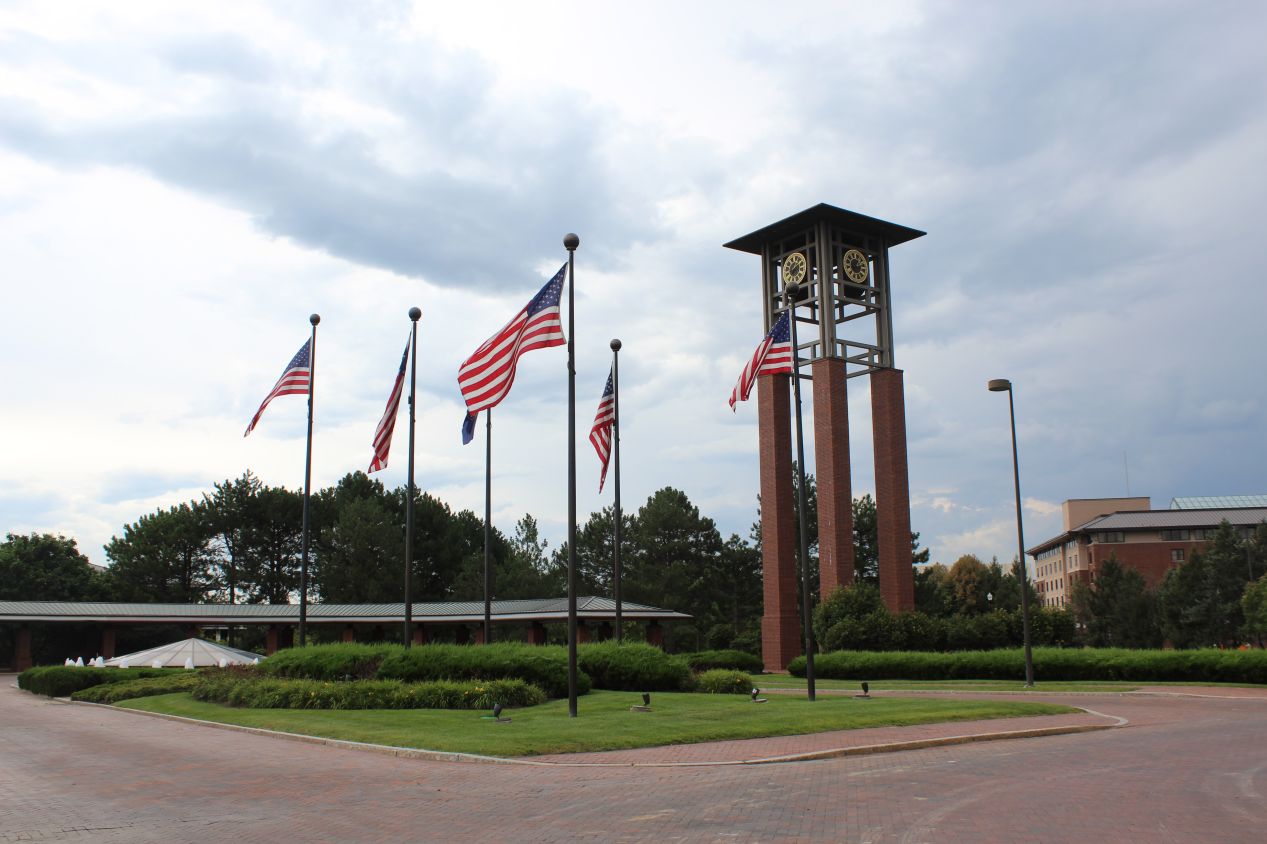


There was a light rain falling when I crossed over the river from Council Bluffs, Iowa to the western side and entered the state of Nebraska for the first time. Like Iowa the previous day, this was the first time that I'd ever visited Nebraska and everything that I would be seeing on this day was new to me. I parked on the southern side of Omaha's downtown and walked east towards the river, visiting an area known as Heartland of America Park. That's where these pictures were taken, with the Omaha skyline a little distance away and lots of American flags flying at the entrance to this green area. The buildings here were sponsored by Conagra, the huge agribusiness conglomerate that used to be known as Nebraska Consolidated Mills and which was originally founded here in Omaha. I walked down to the small lake in the park (which had the uninspired name of Conagra Lake) and spotted a fountain that was shooting water high into the air. Apparently the main fountain is powerful enough to propel water to a height of 300 feet / 90 meters. I was able to see that jet of water from a long distance away later on as I walked around the city, making it an excellent landmark.

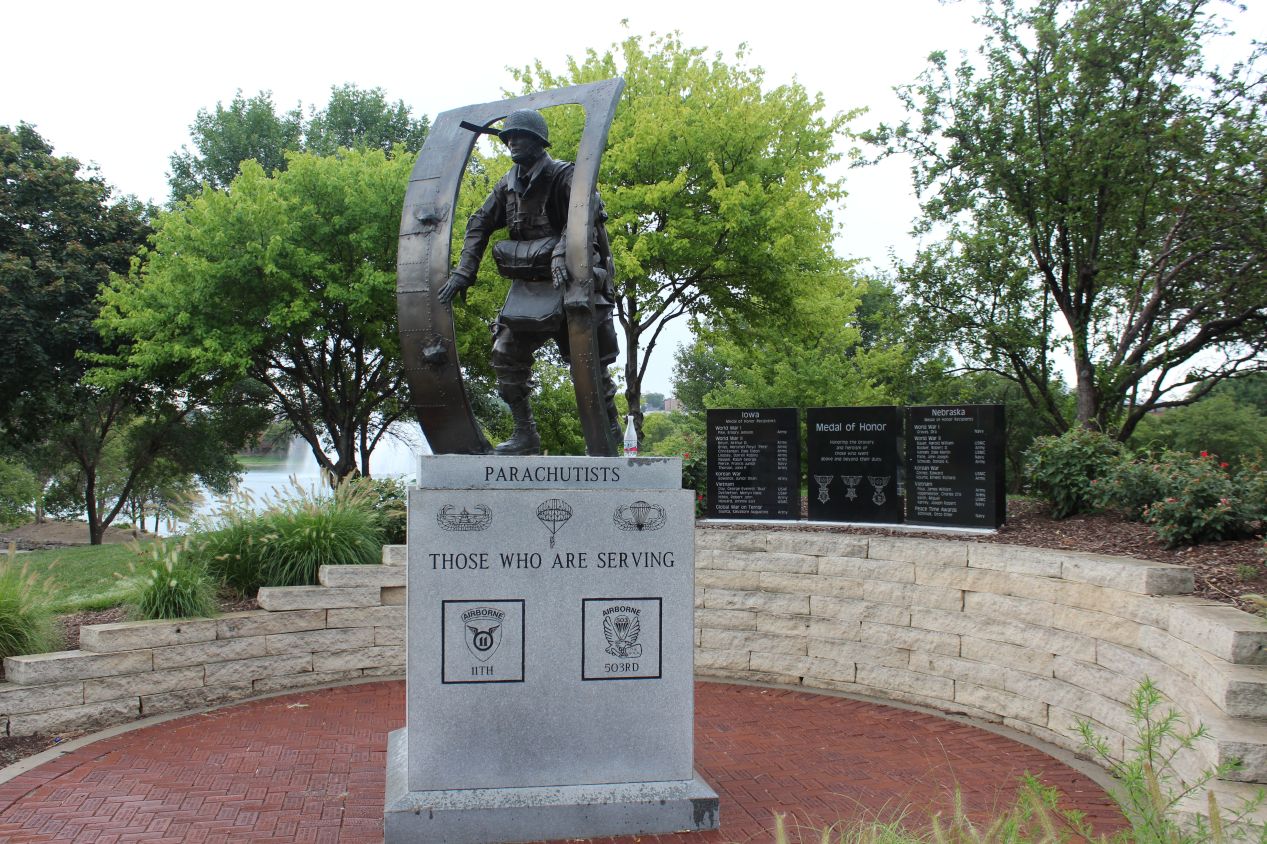


Heartland of America Park would have been lovely on a pretty day, but it felt a bit dreary on this cloudy and wet morning. The place was almost deserted aside from a handful of ducks that I spotted swimming in the lake. There were a number of different monuments here dedicated to war veterans, such as the pictured memorial to the Medal of Honor winners from Iowa and Nebraska. Another monument captured in bronze the spectacle of mortally wounded soldiers limping off into the sunset and the family members that they left behind at home. While these were finely crafted memorials, they certainly didn't do a whole lot to lighten the mood. I walked north from the park, under the interstate overpass, to Lewis and Clark Landing, an open space along the riverfront where the Lewis and Clark expedition first reached what would later become Nebraska in 1804. I should clarify that the river that separates Iowa from Nebraska is the mighty Missouri River, one of the longest in the world when combined together with the Mississippi and a river that runs through both Dakotas up to its source in western Montana. Trade along the Missouri River gave birth to the city of Omaha, and much of the riverfront land has been converted into modern parkland for recreational use.

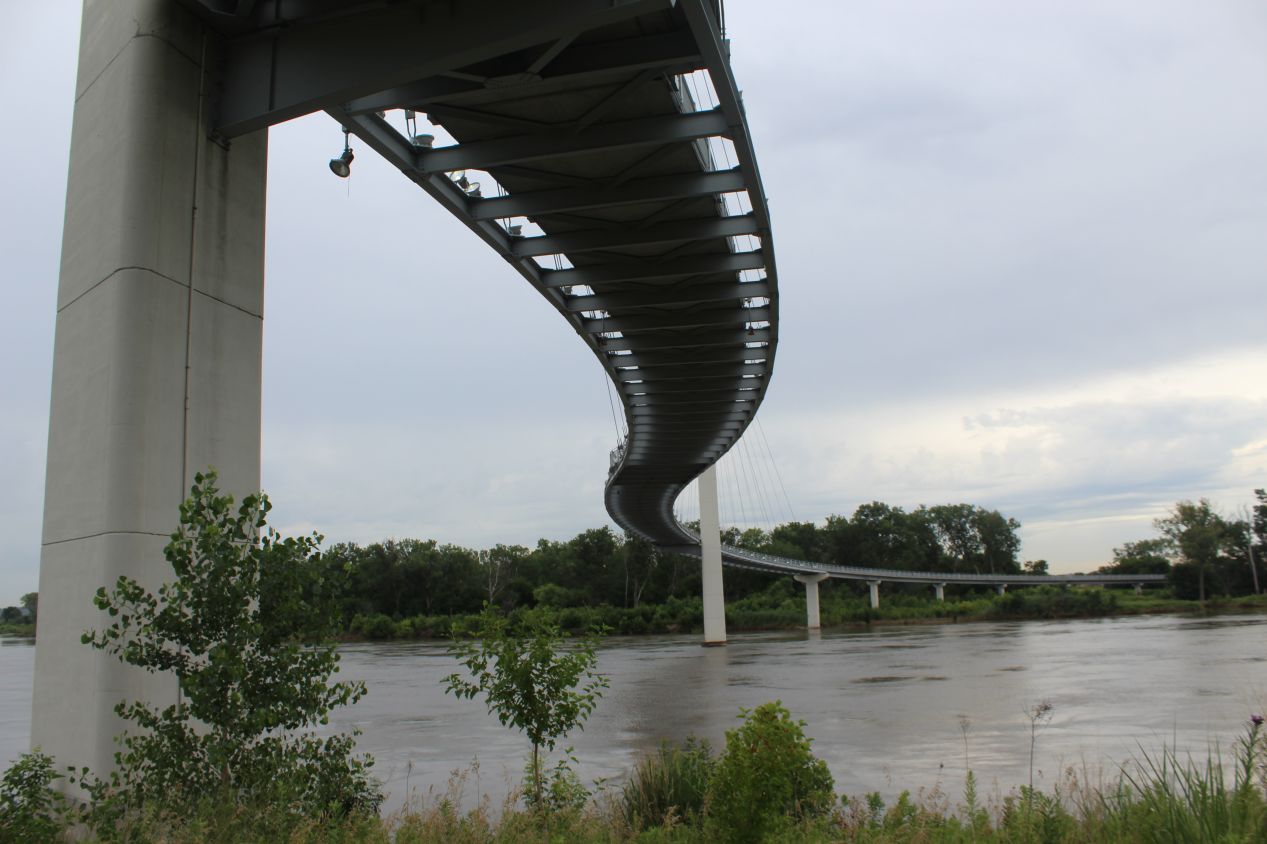


The most distinctive landmark in the area was this pedestrian bridge stretching across the Missouri. This is known as the Bob Kerry Pedestrian Bridge, and it was built in 2008 as a way to connect Omaha together more closely with Council Bluffs on the other side. The architectural design for the bridge had a delicate feel to it, between the two narrow pillars holding it up and the unnecessarily-curving undulations of the bridge path itself. The Lewis and Clark National Historic Trail Visitor Center is located right next to the bridge (which hadn't opened for the day yet when I arrived), and there were a bunch of little signs describing the local wildlife that could be spotted in the area. Despite the early hour and the overcast weather, there was a steady flow of pedestrians crossing the bridge when I visited, people out to exercise or running errands on foot. The top of the bridge was a great place to take in views of the surrounding area; if you look closely, you can even see the fountain from Heartland of America Park rising up in the distance behind the highway.

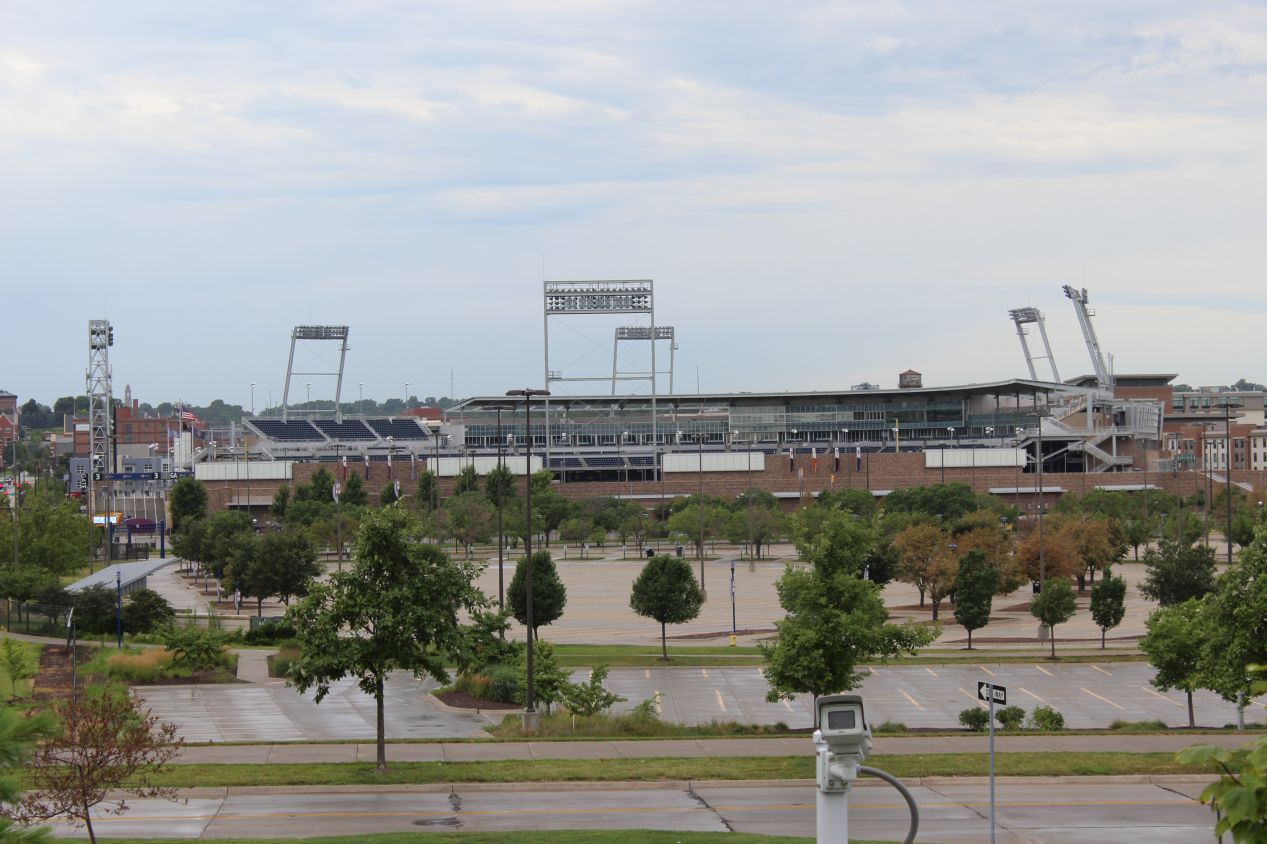


The riverfront district was also the part of Omaha that housed the city's sporting facilities. The first one of these was the arena and convention center; it was known as the CenturyLink Center at the time of my visit, but in the six months between visiting and writing this report the name has already changed to the CHI Health Center (and that wasn't even the original name which was the Qwest Center Omaha). This venue plays host to concerts and similar events when they come to Omaha, and also serves as the home of the Creighton University basketball team, normally the top sporting draw in town. The other big sporting event in Omaha is the College World Series, which is permanently located here on an annual basis. The College World Series is the name given to the competition between the top eight NCAA baseball teams, who come to Omaha each year in June to determine the overall national champion. The games are held in TD Ameritrade Park, built in 2011 as a replacement for the historic Johnny Rosenblatt Stadium which was sadly demolished so that the new ballpark could be constructed on the same site. Everyone who has attended the College World Series always says that this is a fantastic place to watch a baseball game, and the event also brings a lot of money to the city of Omaha each year. I would love to visit and check it out someday. It wouldn't be this year, however, as the College World Series had finished about a month earlier with Oregon State winning the 2018 national title over Arkansas. On this late July morning the grounds were closed and devoid of other people.

This incredible mural was painted on the side of a building just across the street from the College World Series stadium. I have no idea what the background story was behind this project, but wow, that was some impressive artwork! 

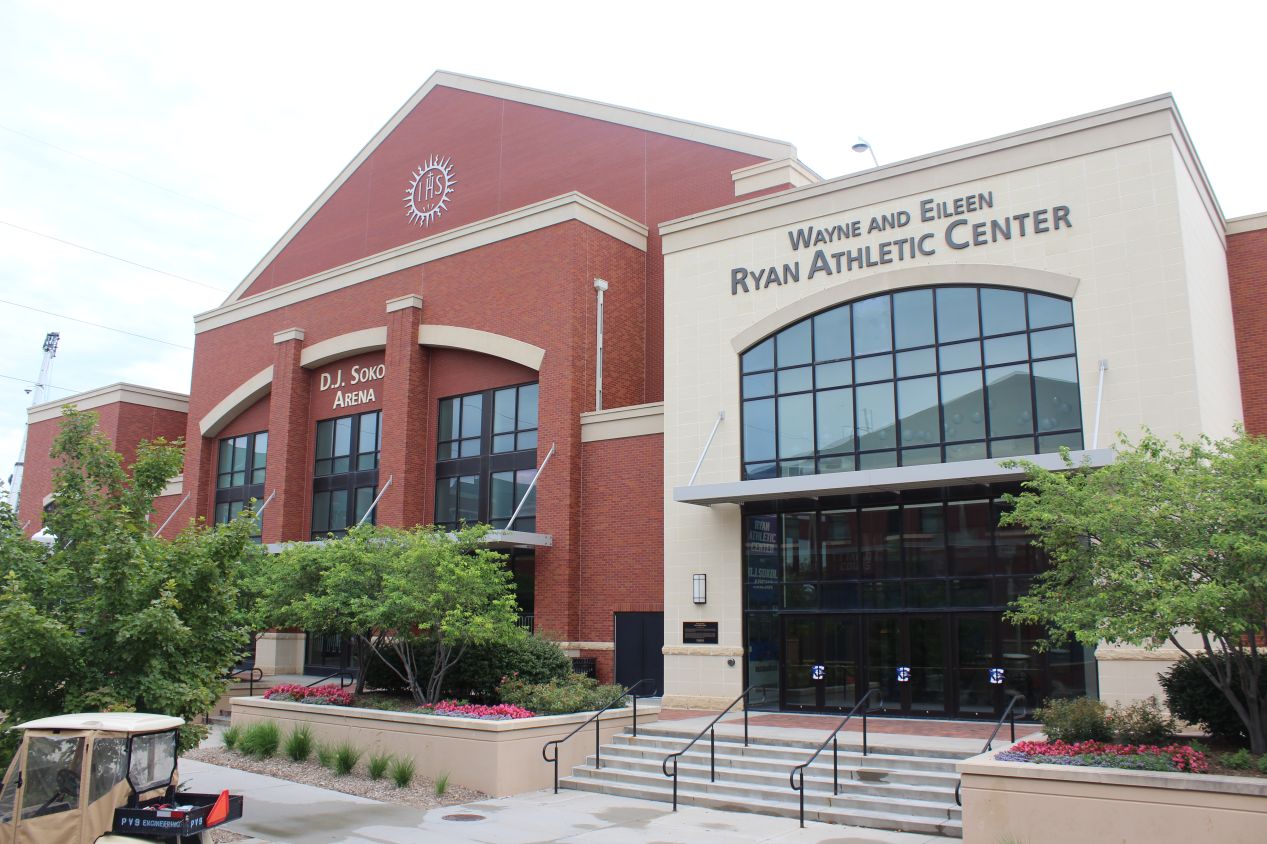


I continued walking west away from the river, and after about three blocks I reached the campus of Creighton University. This was yet another university campus that I figured I'd spend a little while wandering through, but unlike all of the other big public state schools that I had seen thus far on my trip, Creighton is a private Jesuit university. This meant that it was much smaller in size (compare the 8000 students at Creighton to the 45,000 students at Illinois) as well as much more expensive to attend. It turned out that I was entering the section of the Creighton campus where the athletics teams had their facilities, passing by the soccer/lacrosse field, the athletic center, and then the baseball/softball stadium. That stadium was in use by two travel teams of high school aged softball players, and I stopped here to watch them compete for about 15 minutes to take a breather from all that walking. Creighton is a member of the Big East conference, a name that exists for historical reasons and doesn't fit Creighton's geographical location in the least. Creighton is a recent addition to the Big East and has spent most of its history playing in the Missouri Valley Conference, a place that was a much better fit for them but not as lucrative from a financial standpoint. Creighton is best known for their basketball team, which has made the NCAA tournament 21 times including 11 times in the 21st century. For a smaller school lacking the resources of the big powerhouses, Creighton has been stunningly successful and has repeatedly defeated better known opponents in the NCAA tournament. Since Omaha doesn't have any major professional sports teams, Crieghton basketball has essentially become the city's biggest sporting attraction.

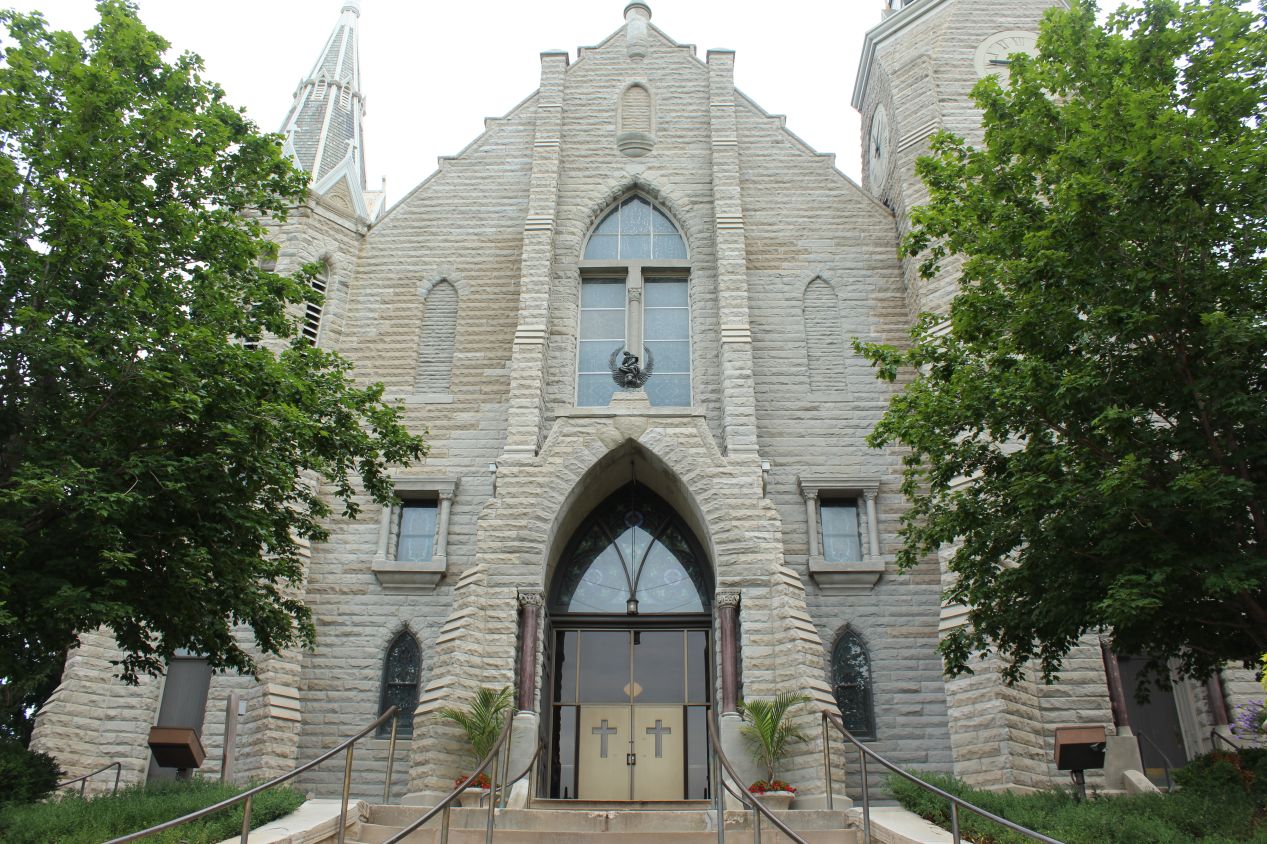


It didn't take long to walk around the rest of Creighton's small campus. The academic buildings were concentrated together in a couple of city blocks, with none of the huge open quads that I had experienced previously at places like Illinois or Iowa State. The focal point of the campus appeared to be St John's Church, the religious structure pictured above, which made sense for a Jesuit university. I peeked inside but there was a service taking place and I didn't think it would be appropriate to try and take photographs as a result. Overall, the experience of going to a school like Creighton would be very different from going to one of the big state schools that I had previously visited. This is the top academic institution in the region and I can definitely see the appeal for someone who would want a smaller and more intimate college experience while still wanting to be located in an urban environment. If you can get past the brutal Nebraska winters and the equally brutal cost of attending a private institution like Creighton, this seems like a nice place to attend college.

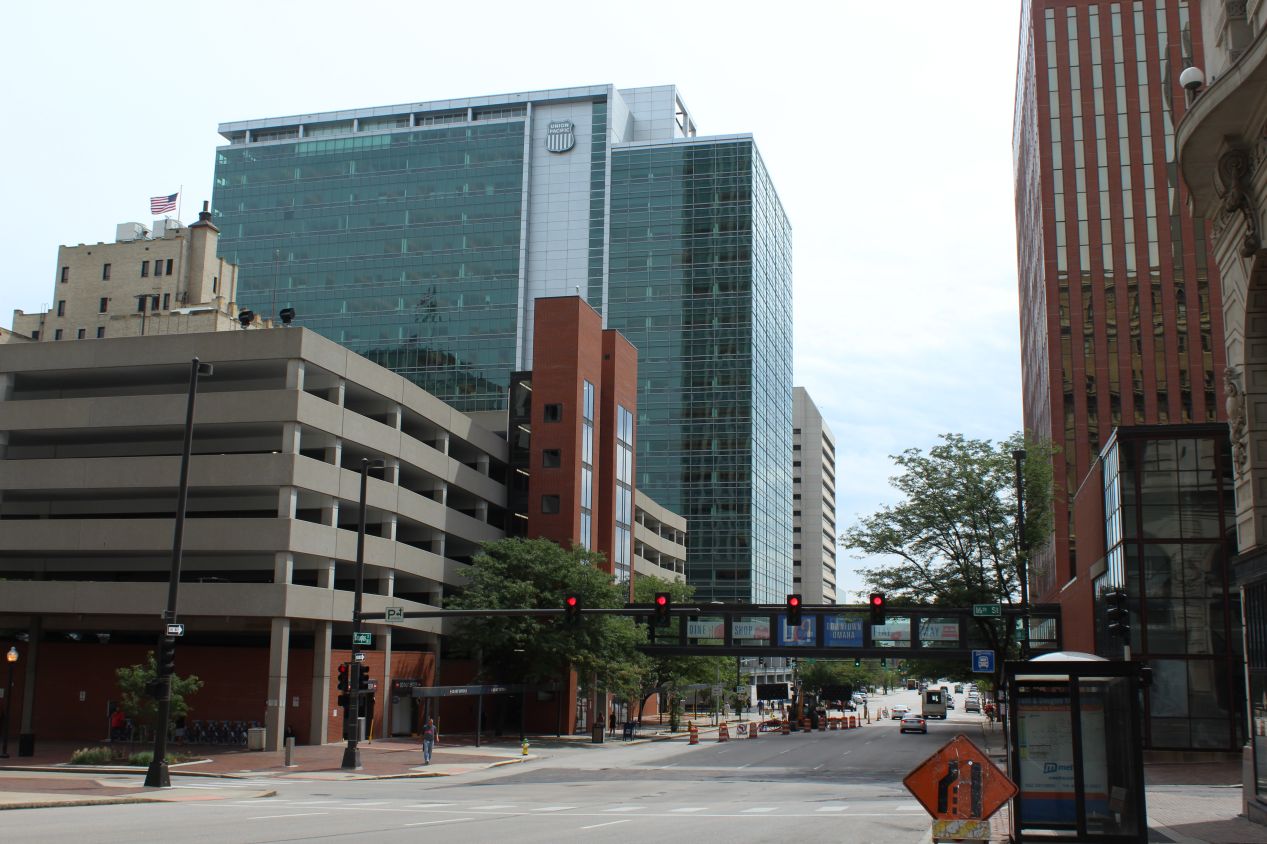


After leving the Creighton campus, I walked to the south for a few blocks and then swung east back towards downtown Omaha. I passed by the Joslyn Art Museum, the principal fine arts museum in the state of Nebraska and one of the city's top attractions. While I was impressed by the Art Deco design on this historic building (which opened in 1931), I had previously decided that this was one place that I needed to skip if I was going to see everything else that I wanted to reach on this day. From there I walked through the downtown heart of the city, where there were a surprising number of tall buildings on display. According to Wikipedia, Omaha ranks eighth among the nation's 50 largest cities in both per-capita billionaires and Fortune 500 companies. The city has always been a hub for businesses related to agriculture, but in recent years Omaha has also attracted significant interest from companies involved in finance, banking, and telecommunications. As a result, the population of Omaha has been increasing steadily over the last two decades and has gone up by almost 50% since 1990. This is a city that's been on the rebound lately.
In addition to boasting of new buildings like the gleaming glass structure with the Union Pacific logo, Omaha has also reburbished the downtown park space known as Gene Leahy Mall. This area was first conceived in the 1970s as a city renewal project, and developed since then into an urban park with lots of green grass and flowing water and walking trails. The sun decided to pick this moment to come out from behind the clouds for the first time all day, brightening up these pictures considerably. Based on the number of new apartments and condos that I saw in this area, it looked like the young professionals working in Omaha were eager to live in the downtown.

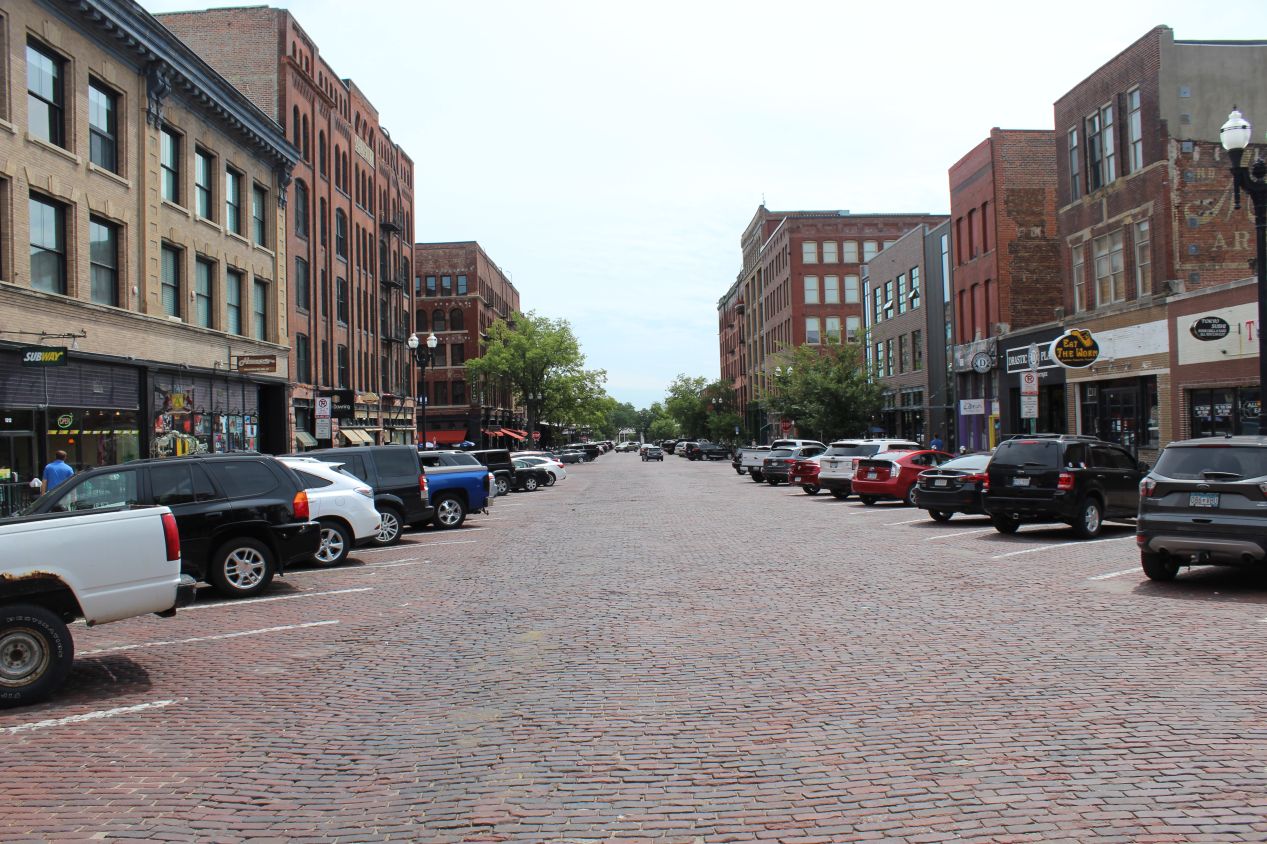


Just to the south of the mall I found myself wandering into the Old Market district. This is a historic neighborhood comprised of about five square blocks that has been preserved and now houses a series of restaurants, art galleries, and upscale shopping. The streets in the Old Market are still paved with bricks instead of asphalt, and many of the buildings retain their historic brick exteriors. Most of these buildings date from the early 1900s and as the name of the area indicates, this was the location of the original city market in Omaha. Today it's a trendy area to visit and serves as a highly walkable neighborhood. I searched around to see if I could find a place to get lunch, and while there were lots of places that looked appealing for a full sit-down meal, I ended up grabbing some fast food instead so that I could keep moving. I decided that I'd eat a bigger dinner later on to make up for it.

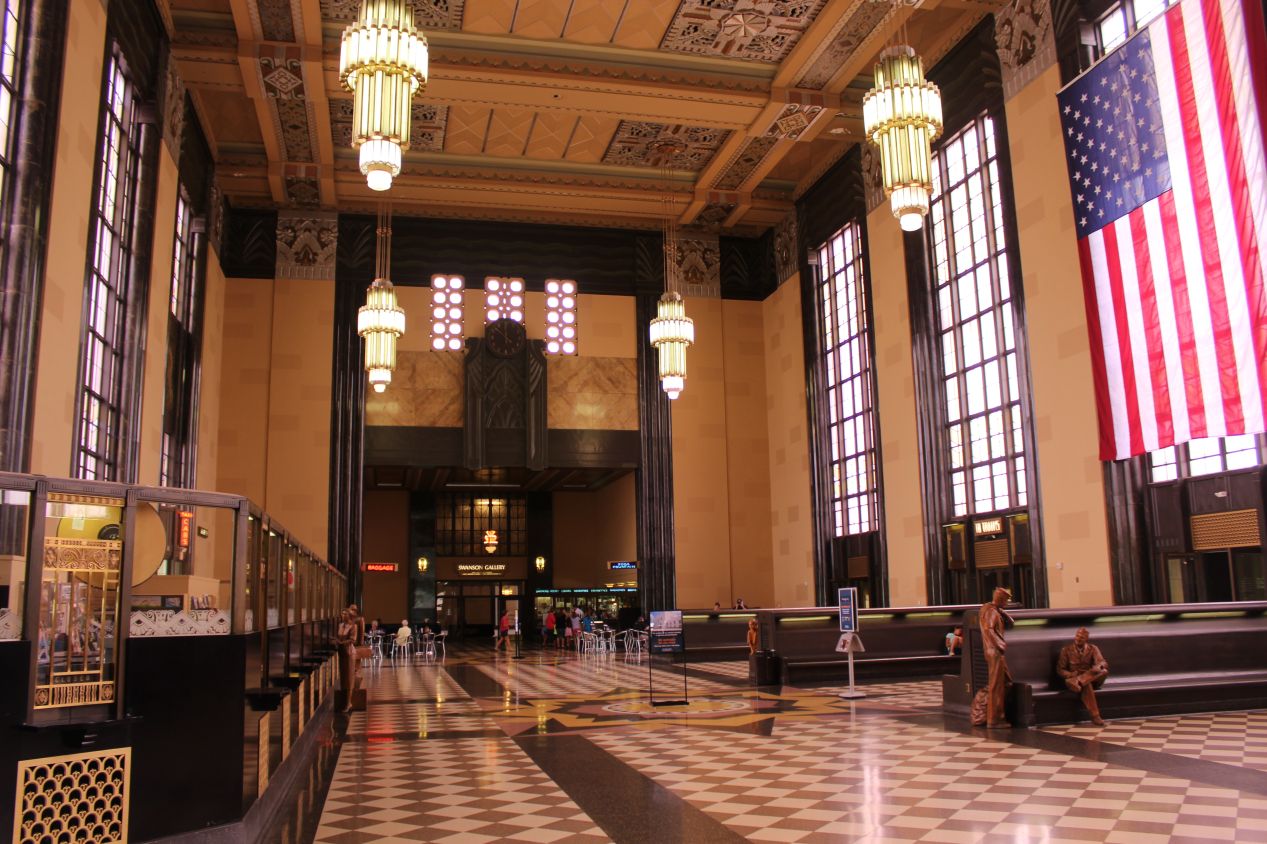


The last attraction that I visted in Omaha was the Durham Museum, located to the south of the downtown in a former railroad station. The old Union Station was in use for close to a century before it shut down in 1971, and the Union Pacific railroad company agreed to donate the building to the city of Omaha to be used as a museum. This railroad station has been restored to look as it would have in 1937, right down to posting a train directory detailing what trains came through on a typical day. There's a soda fountain shop that sells refreshments complete with the employees in period costume, and bronze statues of people from the 1930s in various poses scattered about. The real star of the show was the former train station itself, however, with the high ceilings, tall windows, and long room combining to create a cathedral-like atmosphere. This was a beautiful building from an earlier era, and I'm pleased that the city of Omaha was able to preserve it from demolition by turning it into a museum.

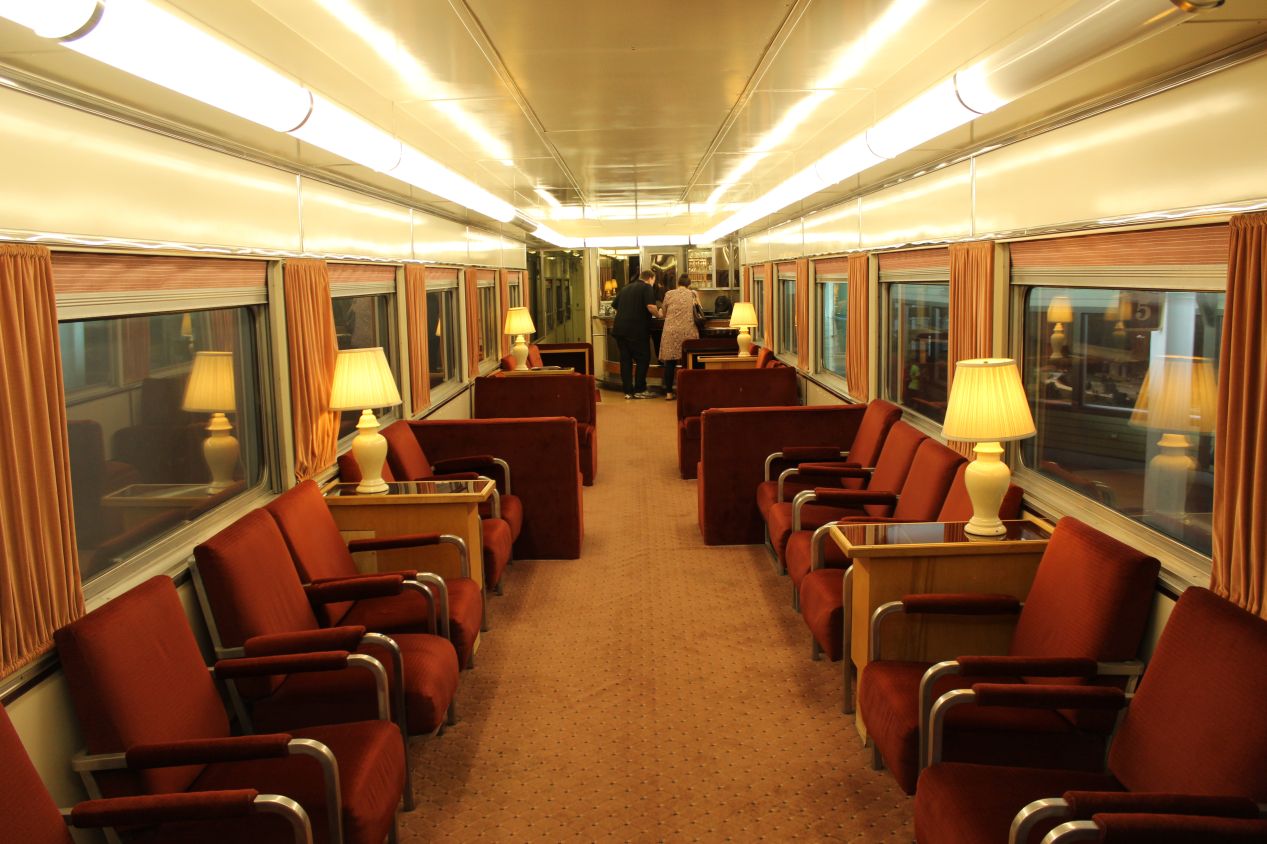


The basement of the museum contained the actual exhibits on display. The Durham Museum had trains, of course, as befitting its status as a former railroad station. (For that matter, the modern rail tracks still run right outside the building.) Visitors could explore a Union Pacific train from the 1930s, complete with going inside some of the passenger cars to experience what rail travel would have looked like in that era. Other parts of the museum had historical and cultural exihibits on display; there was a temporary attraction here about the experience of the Jamestown settlers in the 1607-1610 period, where visitors tried their best to survive by going through a series of challenges. That had nothing to do with Nebraska but the kids at the museum seemed to be enjoying it. Other exhibits covered the past history of the city of Omaha, starting with the frontier days and then looking at the early commercial activity in the city. Most of this was related to agriculture in some way, and there was a section discussing how Omaha had one of the largest livestock exchanges in the world during the early 20th century. A lot of cattle passed through the city en route to being sold as meat somewhere else.


Omaha also played host to something known as the Trans-Mississippi and International Exhibition in 1898, one of those World's Fair-type showcases that were all the rage in the Victorian period. The goal of this exhibition was to showcase the development of the American West, and the city built close to one hundred temporary buildings to house the event, as well as digging a temporary lake for the centerpiece. The Durham Museum had a little model of what this looked like, and I was surprised that so much effort had gone into a temporary exhibit like this. All told more than 2.6 million people came to see the International Exhibition over the five months that it was open, including President William McKinley. Then afterwards everything was torn down and none of it was preserved, with Kountze Park in one of the northern suburbs of Omaha sitting today in the spot where the exhibition was held. It all seemed like a terrible waste to me, although I guess there was a lot more in the way of unskilled labor at the time to assemble and then disassemble this sort of thing.

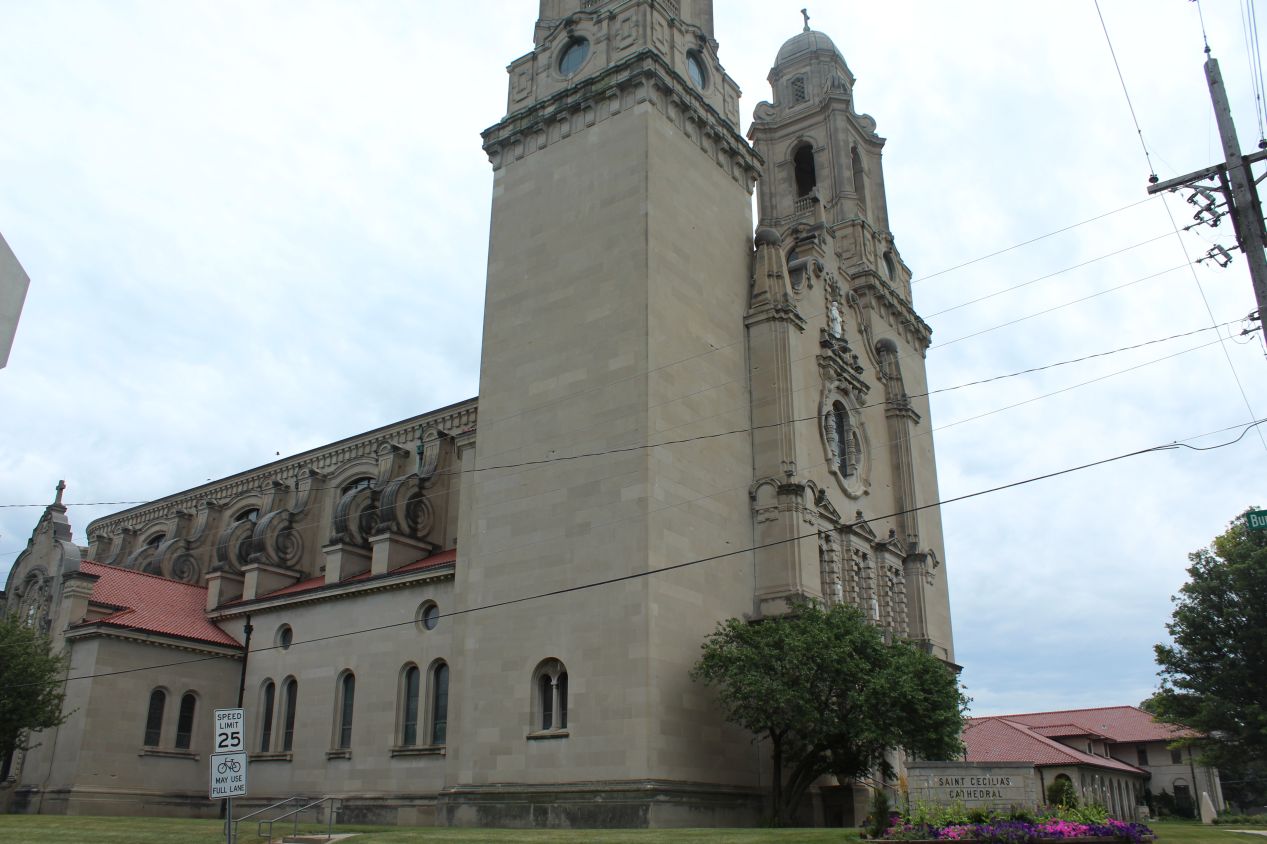


After I finished up at the Durham Museum, I hopped back into my car and drove to visit one last stop in Omaha. This was the St. Cecilia Cathedral located about a mile outside of downtown Omaha in the city's western suburbs. St. Cecilia Cathedral was constructed in 1959 and was one of the ten largest churches in the United States when it was finished, although it has been supplanted in size in the decades since. This is a Catholic church built in the Spanish Revival style, as a tribute to the Spanish colonial influence that once prevailed in this region. St. Cecilia Cathedral was completely empty when I arrived, and the interior looked like a fairly standard Gothic style with two rows of stone pillars running down the sides of the church and stained glass windows placed high up on the walls. The altar was quite small though, staying away from the kind of overt gaudiness that I had often seen in similar Catholic churches back when I was touring Europe. As for the stained glass designs:


There were some fine examples here between the religious figures on display in the main nave and the more abstract roses in the small side chapel. Anyway, I only stopped at St. Cecilia Cathedral for a few minutes to take a look at Omaha's largest church, and it's interesting mostly for the Spanish-themed architectural design of the exterior. I would be seeing much more of that as I traveled towards the American Southwest. This is a destination that's probably skippable unless you have an interest in religious architecture like I do; I visited so many cathedrals in Europe that I've developed a bit of an eye for their design.

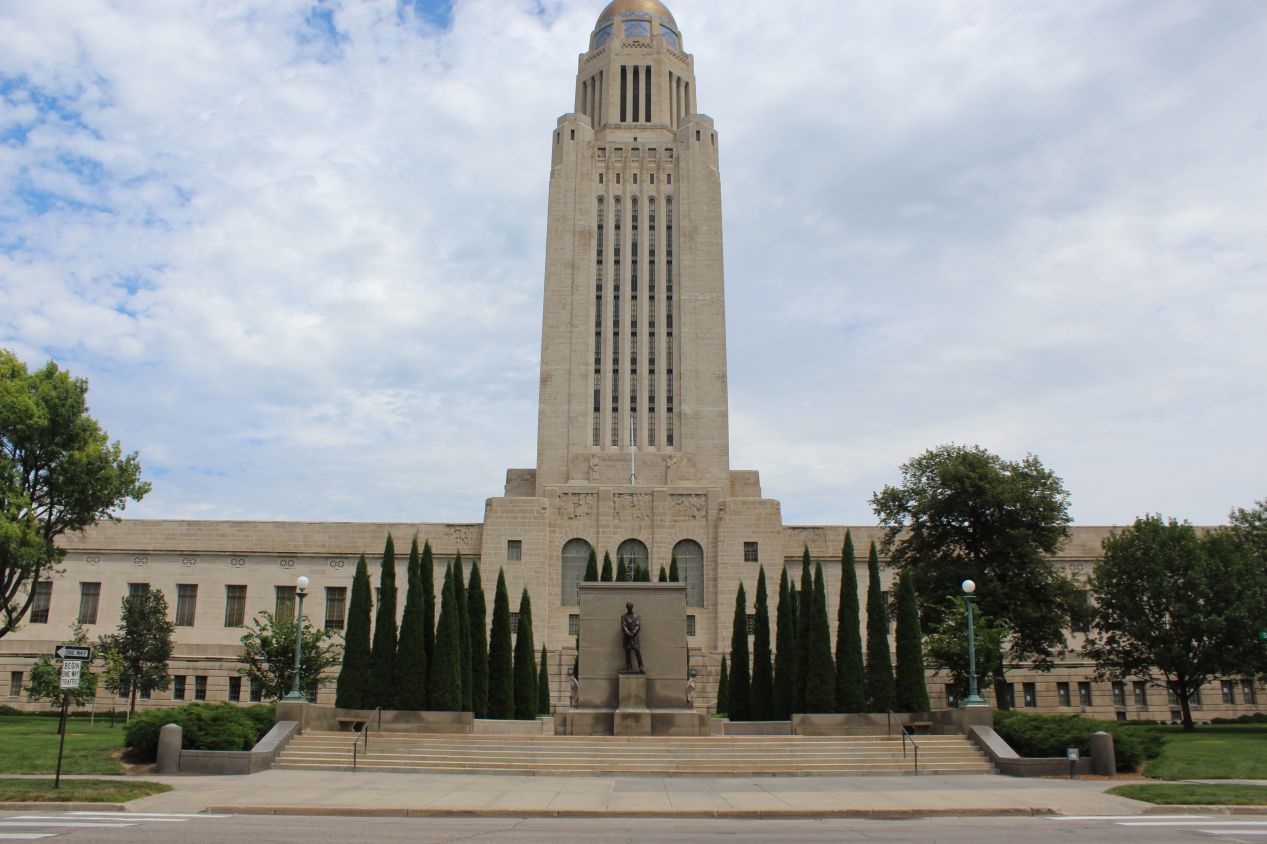


At this point, I made the hour-long drive from Omaha to Lincoln, the capital city of the state of Nebraska. Lincoln is less than half the size of Omaha, but as the state capital it holds both the Nebraska State Capitol building as well as the University of Nebraska, and therefore plays an outsized role in the state. Omaha is the state's economic hub while Lincoln is the political and educational center. The very first place that I headed upon arriving was the Nebraska State Capitol, a building that I could hardly miss due to its unusual setup. This was the fifth state capitol building that I had visited on my trip, and it looked absolutely nothing like the other four. Gone were the Greek columns and the central dome that topped the other four designs. Instead, Nebraska's state capitol building was a 400 foot / 120 meter tall towering skyscraper located in the middle of an otherwise flat plain. The Nebraska State Capitol is the second-tallest building out of the state capitols, surpassed only by Louisiana's highly derivative structure that essentially stole the Nebraska design and was constructed to be slightly taller. The architectural style of the Nebraska State Capitol is Art Deco, a fitting choice given that it was built during the 1920s and opened in 1932. The unique nature of this capitol building was one of the reasons why I wanted to stop in Lincoln, as part of my "Gotta catch 'em all!" tour that I was doing through the state legislatures.

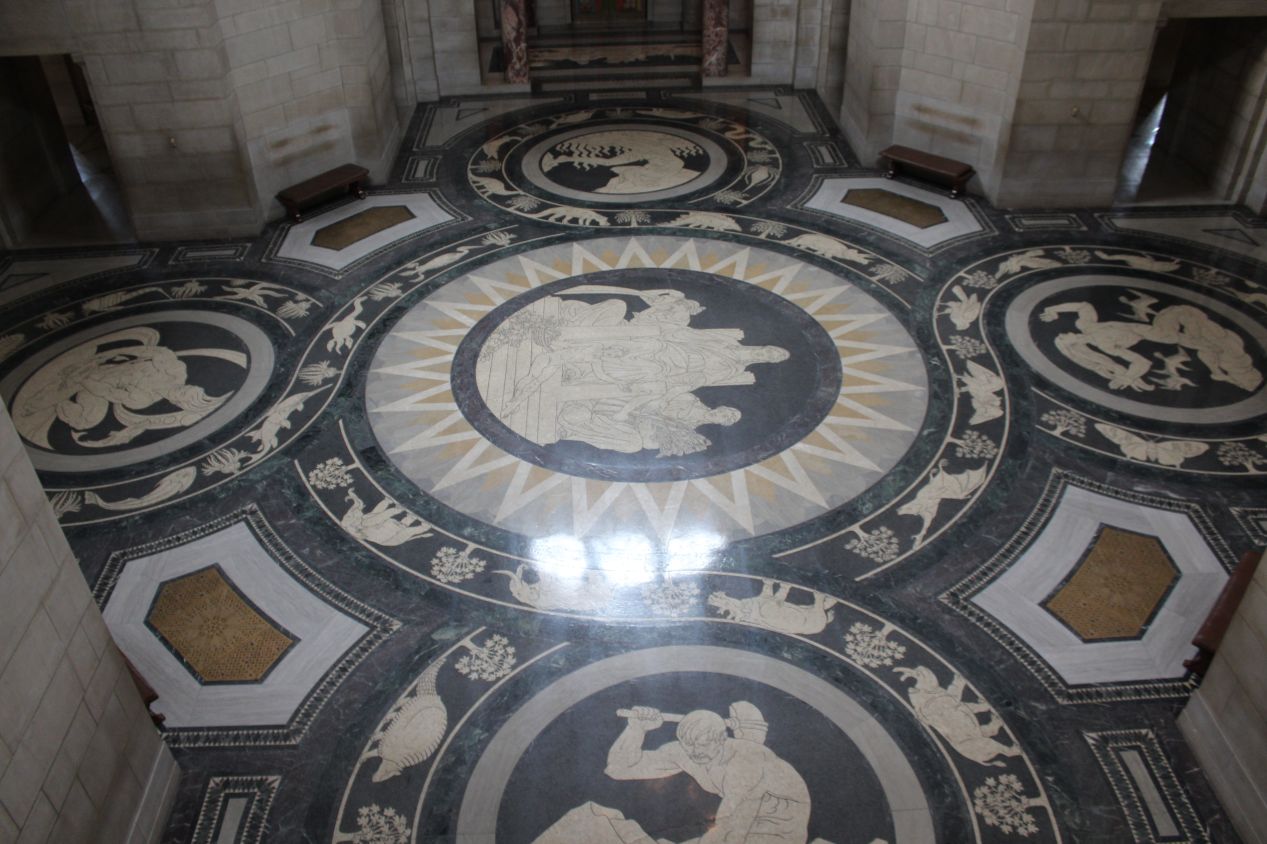


The interior of the Nebraska State Capitol was built like some kind of structure from the Roman Empire, with lots of columns and arches and mosaics in the floor. It also contained elements of a traditional cathedral, with the overall plan comprising a Greek cross enclosed by a 437-foot (133 m) square. The walls were built almost entirely out of unrelieved white limestone, and a huge central tower rises up out of the middle of this design. In addition to all of that, the building also incorporates some small, colorful designs based on Native American cultures tucked into odd corners and doorways. This whole place was wild and I couldn't stop taking pictures to try and capture what it was like. The best summary that I can come up with is to imagine a traditional cathedral built by a Roman emperor, while also somehow incorporating depictions of traditional American frontier life. What an eclectic mixture.

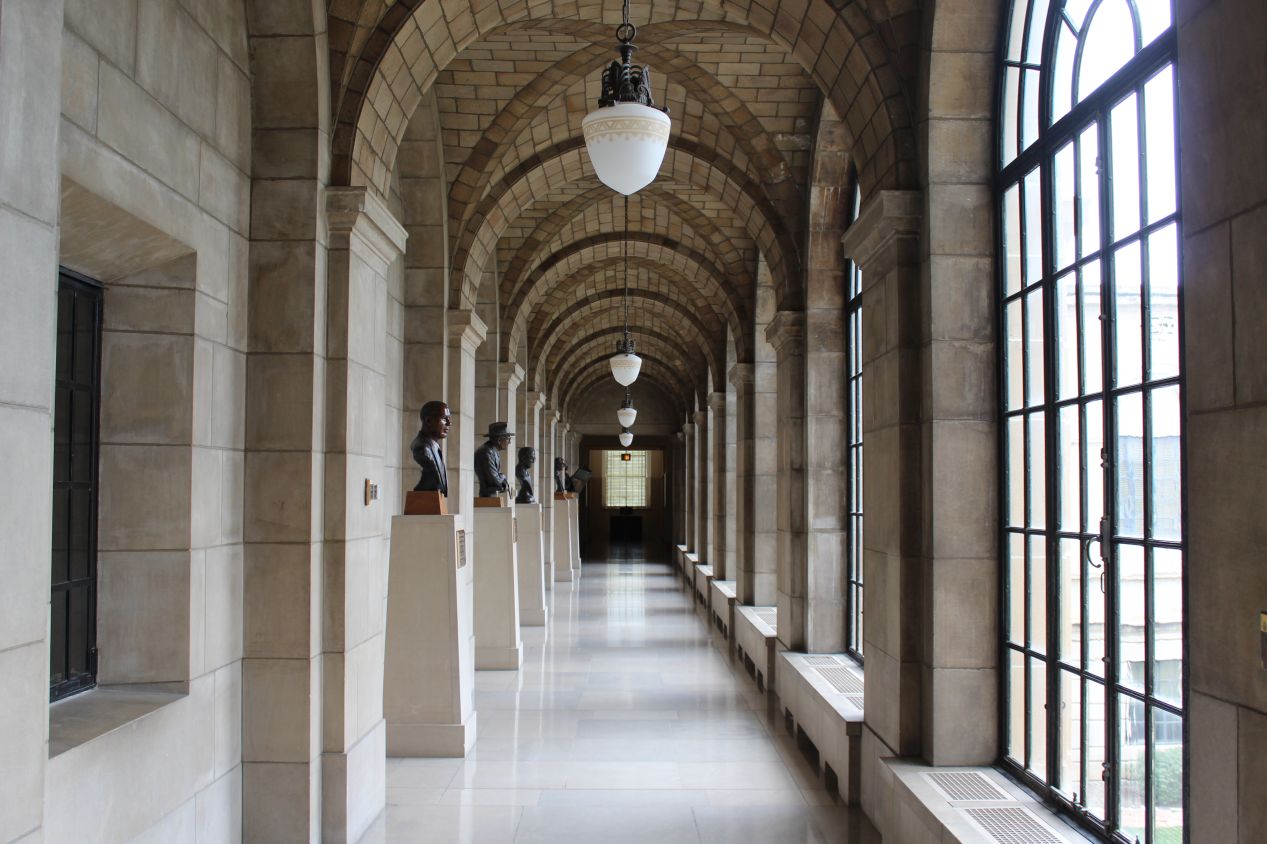


The Nebraska State Capitol building is the home to the state government, and that includes all three branches: the governor, the legislature, and the judiciary. The first picture above depicts the room housing the Nebraska Supreme Court, a significantly smaller chamber than the ones than I had previously seen for the Illinois and Iowa Supreme Courts. Nebraska has seven individuals on its supreme court that are initially appointed by the governor and then must run for reelection every six years afterwards. For once, there were actually seven seats behind the bench for the seven justices.
The Nebraska Legislature is much more unique and holds a role different from every other state legislature in the United States. Nebraska only has a single legislative body instead of the usual two, a unicameral legislature in the official terminology, and it is officially a nonpartisan body with no political parties (although in practice the legislators do have party affiliations). This unusual setup is a local quirk dating back to the 1930s when Nebraskans changed their state constition to consolidate their two legislative bodies into a single one, out of a belief that this would reduce government spending. Perhaps for the same reason, Nebraska also has the smallest legislature of any U.S. state with only 49 total members in this one chamber. (It is the opposite of New Hampshire which has an incredible 400 members in its House of Representatives alone, enough so that each representative in the small state has only a little over 3000 constituents.) Nebraska's unique legislative setup was reflected in the architecture of its chamber, which eschewed the typical American semicircular rows of benches in favor of a more linear setup akin to parliaments in the British tradition. The desks where the legislators sit looked determinedly old-fashioned, with big phones and hand-painted signs for each member's name and nothing digitalized that I could spot. All of this was completely different from what I'd been seeing in Illinois and Iowa over the past few days. Nebraska stands apart in this regard.

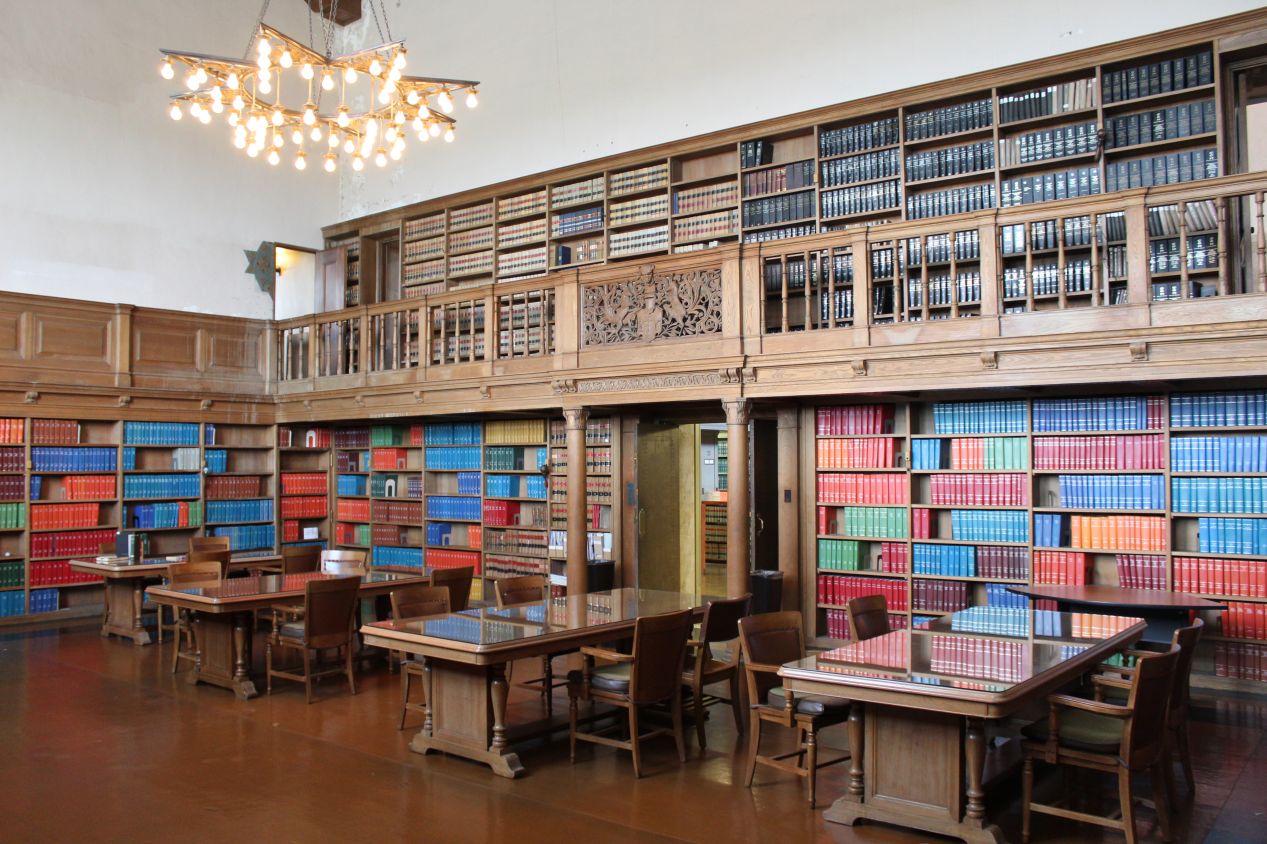


The capitol building was also naturally home to the Nebraska State Library, and after finding the intimidating-looking doors to be unlocked, I headed inside to snoop around. I was greeted with another old-fashioned setup as this library proved to host thousands of volumes of legal documents from the state's past history. Many of the shelving units looked like they could have been nearly a century old, and I found that at least part of the library was still using an actual paper-based card catalog, something that I hadn't seen in many years. The back room of the library had detachable light bulbs on a long cord that researchers could use when the sunlight outside faded, something else that I've read about that used to exist in libraries without ever actually coming across in person. While the two floors of the Nebraska State Library couldn't compare to the beautiful designs that I had seen the previous day in the Iowa Law Library, there was a rough and outdated frontier feel to this setup that I found charming. These records likely haven't received very much attention from historians and would probably be fertile grounds for some dissertation projects.

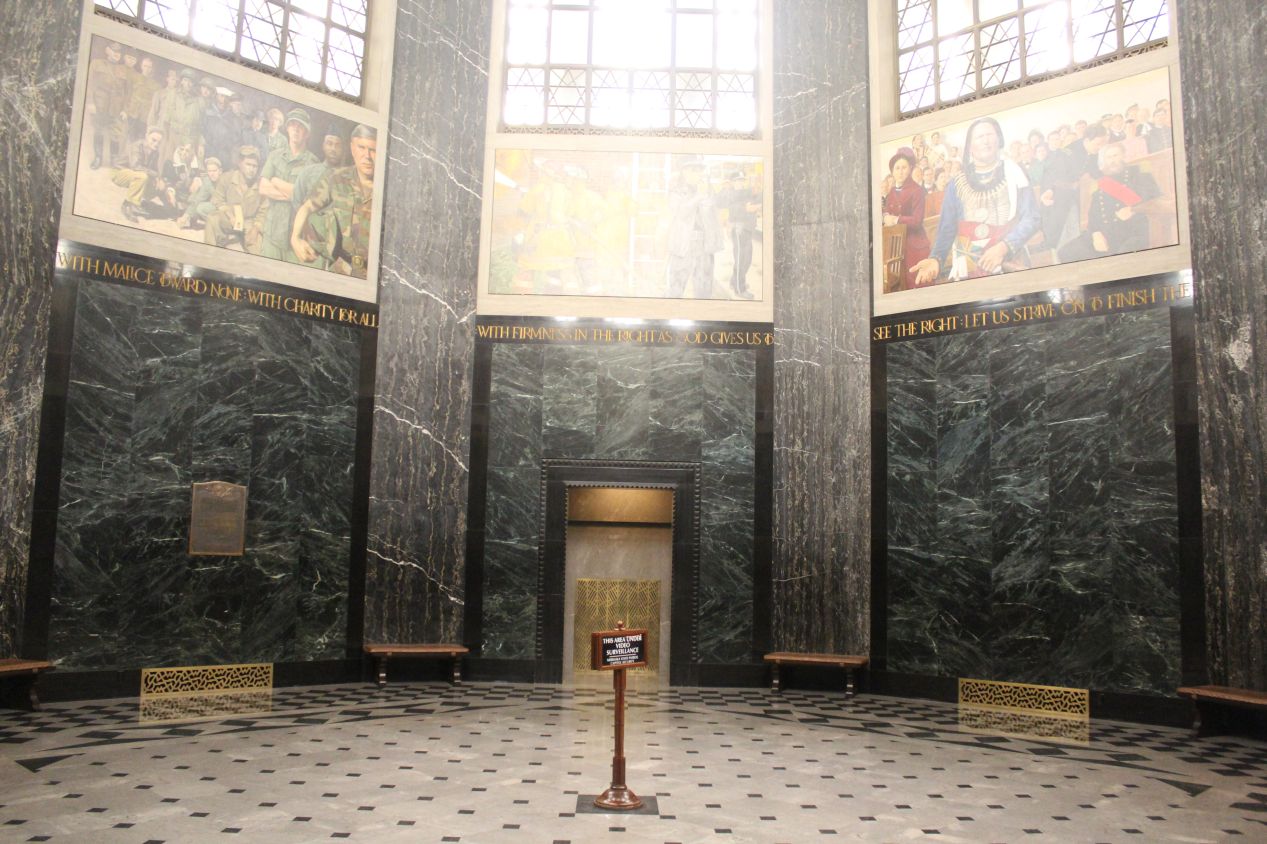


There was one more place to visit in the Nebraska State Capitol: the central tower. This was reachable by riding a cramped and old-fashioned elevator up to the 14th floor, where the structure opened up into a room directly beneath the top of the building. This room is known as the Memorial Chamber and it contains a series of eight murals depicting different hardships next to various ideals. For example, the murals pictured above include "The Perils of Fire" next to "The Ideal of Freedom" and depict individuals from different backgrounds in Nebraska, from military personnel to firefighters to Native Americans. A domed ceiling caps off the Memorial Chamber, with a statue of a man planting seeds named "The Sower" located on the other side of that dome at the top of the building. There was no exterior walkup up here that granted access to the outside, but it was still possible to see out the grated windows to get a view of the city of Lincoln. I was unable to spot much in the way of landmarks, and the views to the east and south held little more than the occasonal building popping up in an otherwise wooded area. The downtown portions of Lincoln were visible to the north and west though, and I could barely spot Memorial Stadium on the University of Nebraska grounds in the distance. That would be one of my remaining targets to visit before the day was finished.

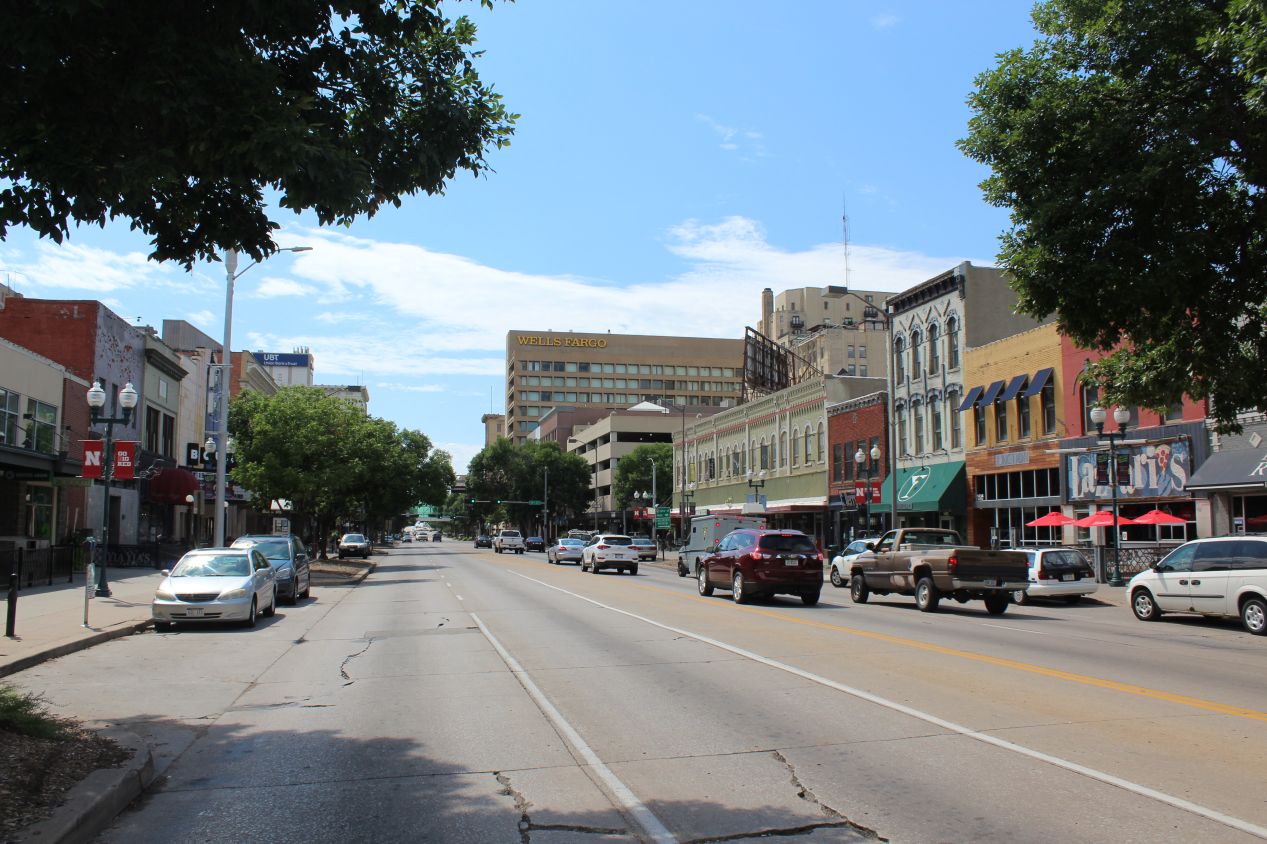


The downtown area of Lincoln was located a few blocks to the north of the state capitol. This was the place where some of the other state government buildings could be found, along with a collection of shops and restaurants and bars running along O Street and P Street. It's important to remember that Lincoln is a college town as well as the state capital, and many of the local businesses were clearly designed to cater to Cornhusker students and returning alumni. The Mariott hotel in Lincoln even styled itself "The Cornhusker Mariott" on the side of the building to provide a sense for how strong the local association is with the university. For the most part this seemed like a pretty typical college town atmosphere, reminiscent of what I'd seen in places like East Lansing and Ann Arbor and Iowa City earlier on the trip.

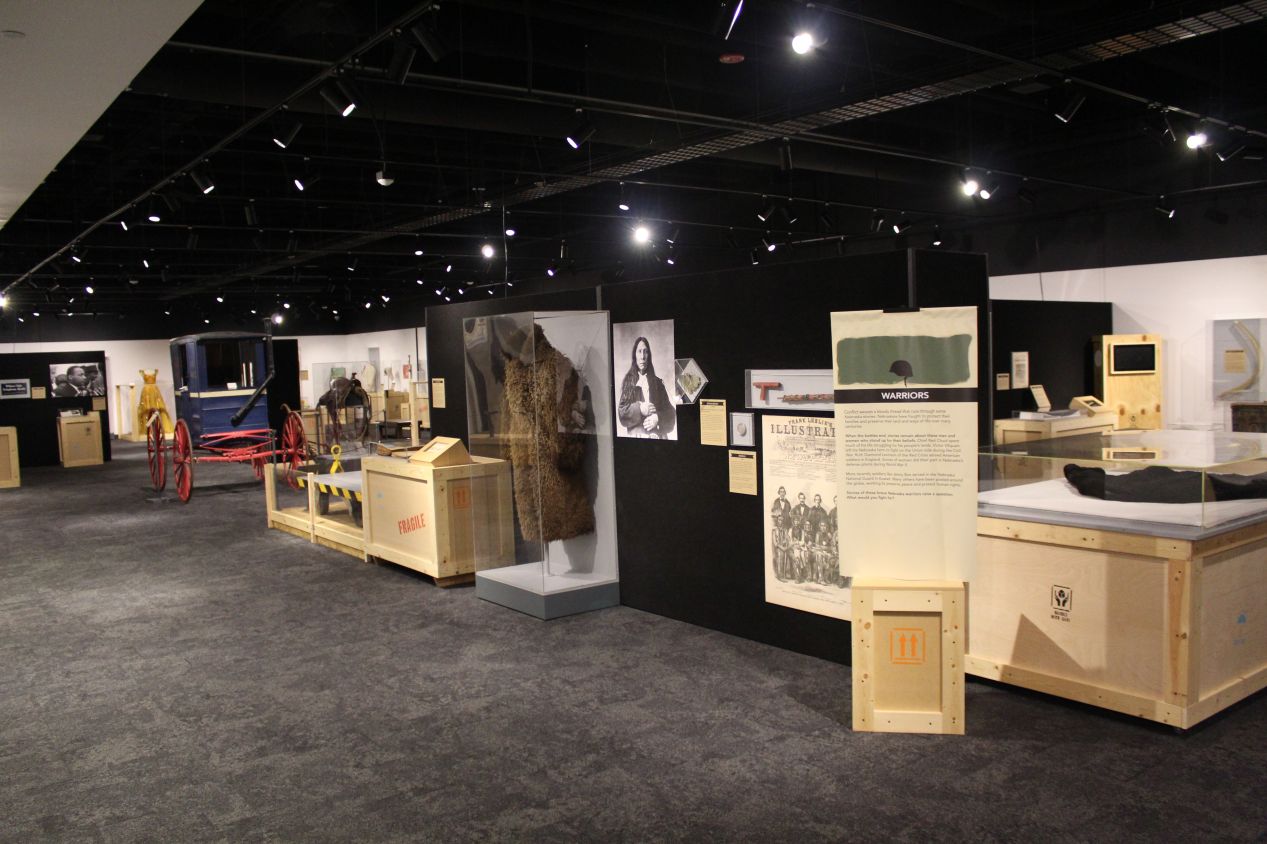


Along the way to the Nebraska campus, I stopped to see the Nebraska History Museum. This is a small museum run by the Nebraska Historical Society with artifacts on display that mostly dated from the 19th century pioneer period. Some of the highlights included one of the original copies of Nebraska's constitution from 1867, a series of colorful quilts that had been assembled by Nebraskans over the years, and a really creepy set of dolls of the former US presidents sitting in a display case. While the collections here weren't too extensive, it only cost $5 to enter and was worth the stop for someone like me who has a love of history. I learned a bit more about Nebraska's geography and there were a couple of hands-on exhibits here designed for kids.

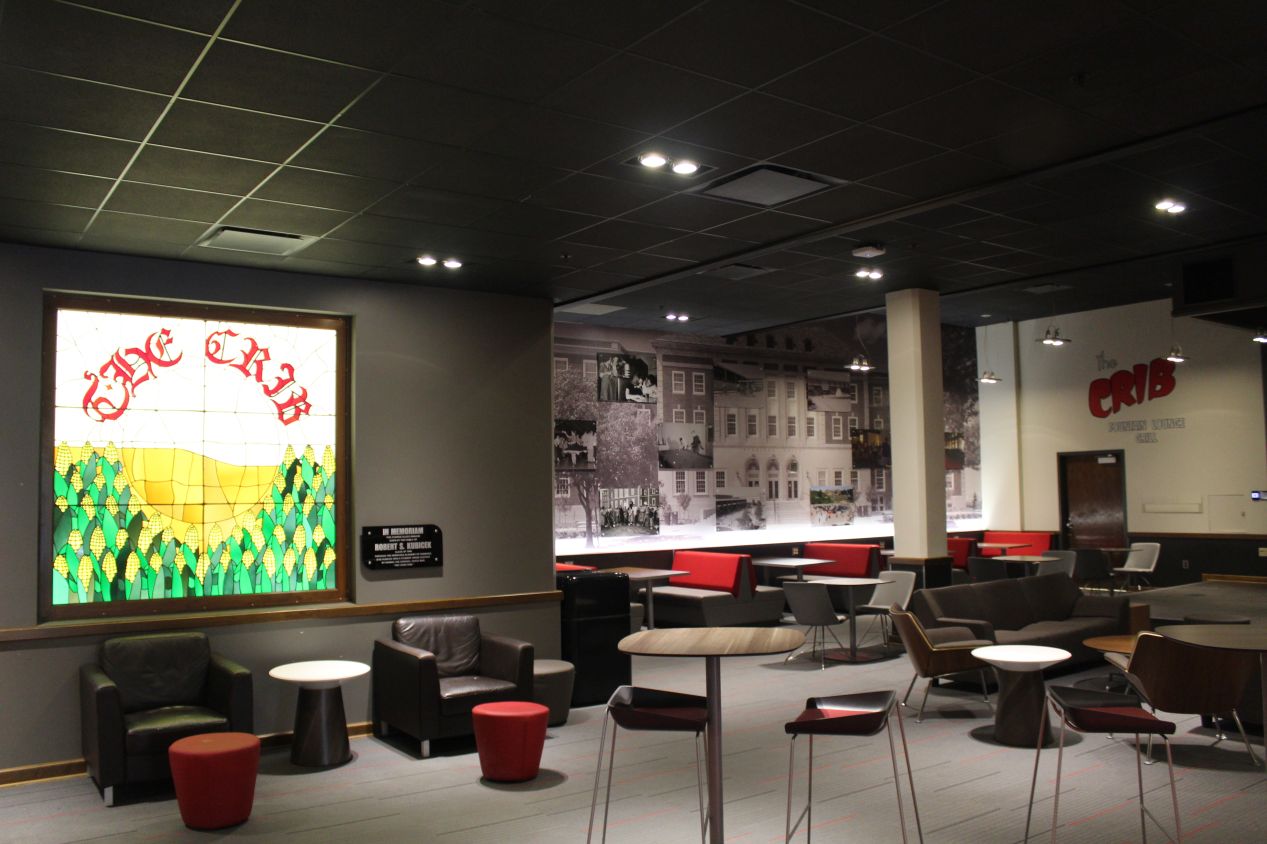


The last place that I wanted to visit for the day was the campus of the University of Nebraska. This is another big state school and the largest to be found by far in the state of Nebraska, but I found that it wasn't quite as large as I'd expected before arriving. Nebraska had about 25,000 students when I visited in 2018, and while that's still a large number, the campus was noticeably smaller than the one occupied by the 45,000 students enrolled at the University of Illinois. I was entering the Nebraska grounds from the south and came across the Nebraska Union almost immediately. I noticed with amusement that "The Crib" lounge and grill area featured a window design with corn growing on it - oh yes, I was in Nebraska, all right! Most of the space in the union was given over to student organizations and administration, with the basement housing the student food court and the university book store. As with most other universities, this was the place to load up on Cornhusker merchandise of pretty much any type imaginable. Nebraska did have one thing that I hadn't seen anywhere else: wearable foam corn hats! I seriously thought about purchasing one but ultimately decided to hold off. What would I ever do with a cornhusker hat anyway?

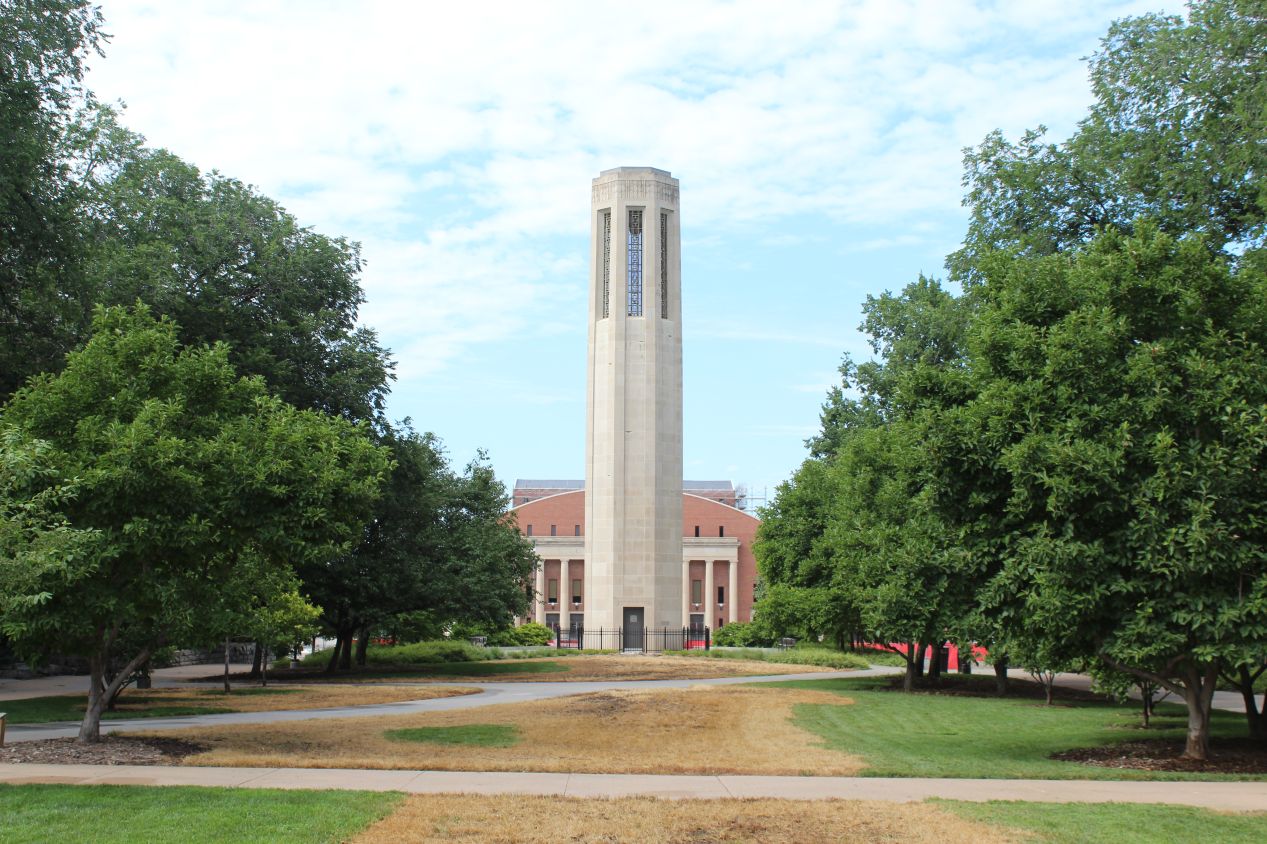


I walked through the middle of the Nebraska campus where there was a central quadrangle, but again, it wasn't nearly as large as what I had been expecting to find. I took note of some of the main sights here, such as the Don Love Memorial Library next to the union, and the Mueller Tower pictured above. Every university needs to have its memorial bell tower, and Mueller Tower is the local version at Nebraska, dating back to 1949. Admittedly I was not walking through the residence halls, which are mostly located on the outskirts of the campus instead of here at the center. Still, Nebraska's campus felt almost charmingly moderate in size instead of the monstrous sprawling complex like I had been thinking I would see.

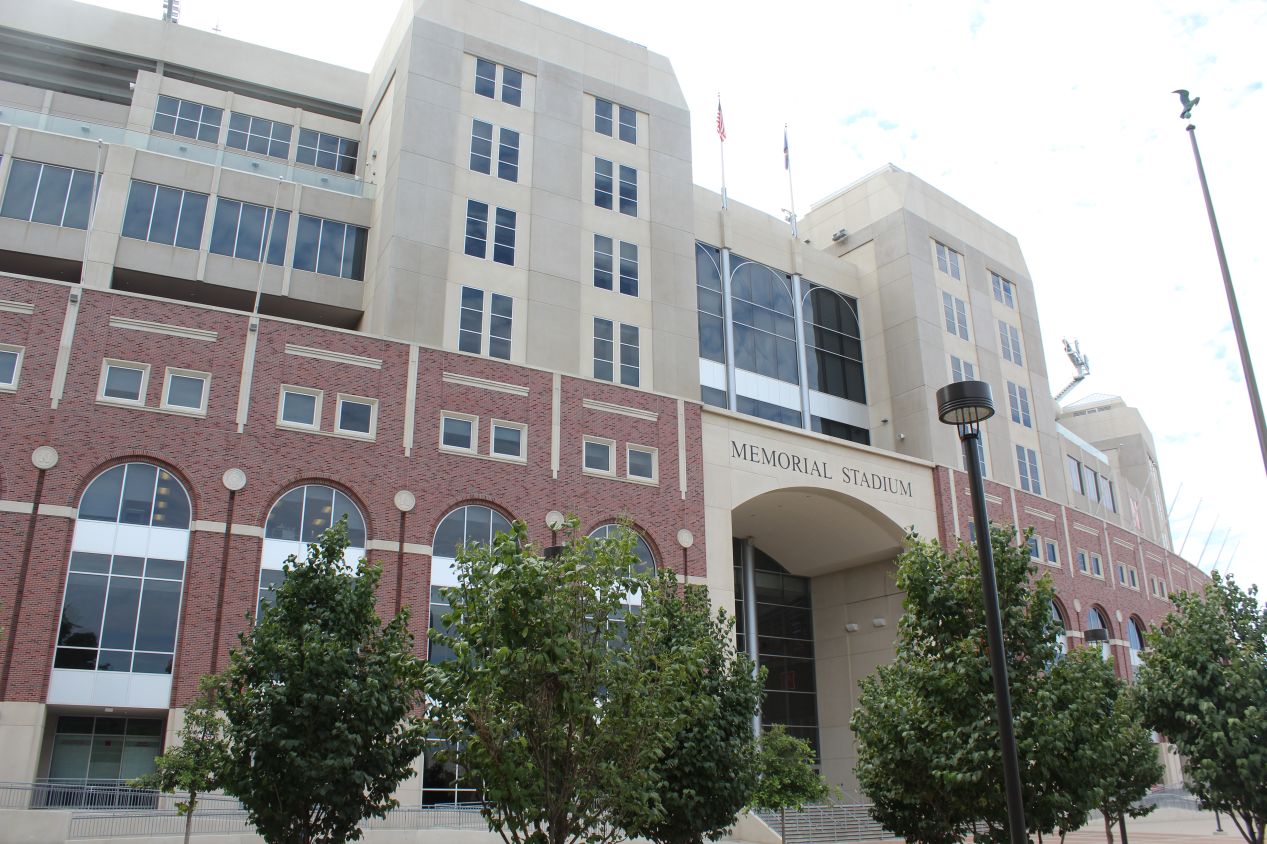


If there's one thing that isn't small on the Nebraska campus, it was Memorial Stadium, the home to the football team. This is one of those stadiums built right into the middle of the campus, with the mathematics department in Avery Hall (visible at the corner of that first picture) literally within a stone's throw of the entrance. Memorial Stadium was constructed back in 1923 and it has been steadily expanded over the years to the point that it can now seat as many as 90,000 people for big games. To get a sense of the importance of football to the university, Nebraska has sold out an NCAA-record 366 consecutive games at Memorial Stadium, a streak that dates back to 1962. When full, Memorial Stadium holds more people than every city in Nebraska except Omaha and Lincoln.
Nebraska football has been a major powerhouse throughout the school's history, with five national titles and an incredible 46 conference titles. Nebraska has spent most of its history competing in the same football conference as Oklahoma, Kansas, Missouri, and Colorado in what was once known as the Big Eight and then later became the Big Twelve. However, in 2011 the school moved to the Big Ten conference with a completely different set of universities and now somehow finds itself in the same conference as my University of Maryland, a rivalry that makes no geographic sense at all. It's a good thing that Nebraska wasn't in the same conference as my Terps back in the 1990s, when they dominated college football to a frightening extent. Nebraska won national titles in 1994, 1995, and 1997 while putting up an incredible record of 60 wins against 3 losses at one point. Those days are long over, however, as the 2018 season following my visit would rank among the worst in Nebraska's history. The Cornhuskers started out the season by losing their first six games, which had never happened before in the 100+ years of Nebraska football, capped off with a home loss to lowly Troy University in mid-September. For a college football program that's historically been one of the most successful in the country, my visit was coinciding with a dark period of failure.


Remember how I largely skipped out on lunch earlier in the day? I made up for it by getting dinner at a restaurant named Misty's Steakhouse and Brewery located about a block outside of the Nebraska campus. This was one of those places with old pictures from the university featured on the walls and Nebraska football helmets in featured spots. In other words, exactly the kind of local place that I was hoping to visit. My fiance Liz had told me that I couldn't visit Nebraska without getting a steak dinner at least once, and the restaurant served up this tasty meal on demand. It was the most expensive dinner that I ordered on my vacation and probably the second-best meal that I ate.
It was getting late in the day at this point and I headed off to my hotel to get some rest. I had a very long day upcoming tomorrow, as I looked to traverse the bulk of the state of Nebraska before crossing over into Wyoming. This day had been another treat from a sightseeing perspective, taking in the sights at two different cities that I had never expected to visit. Between St. Cecilia Cathedral and the Durham Museum in Omaha, and the Nebraska State Capitol and Memorial Stadium in Lincoln, it had been a diverse group of attractions that I'd visited. From this point, I was looking forward to leaving the cities behind for the next few days as I would be spending more time outdoors to see some of the natural wonders of the Great Plains and Rocky Mountains. There were many miles yet to go before I could rest.



